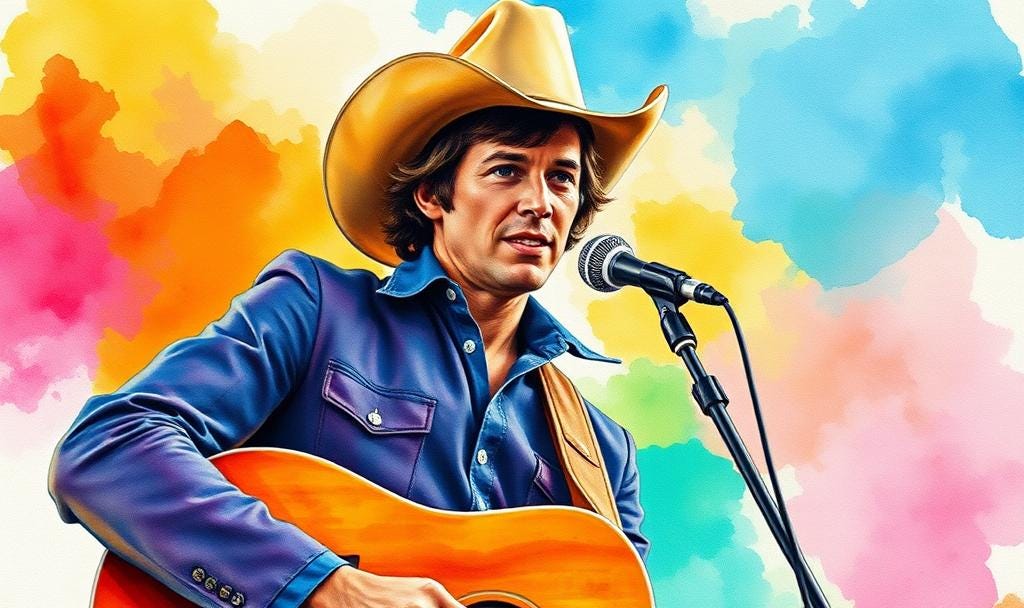This is part of my Pop Music in the ‘80s series.
By the mid-1980s, country music had a reckoning on its hands. The glitzy polish of the Urban Cowboy era had helped the genre reach new audiences, but it also left many longtime fans and artists questioning what “country” even meant anymore. For some, the answer wasn’t to push forward, but rather was to look back.
Out of that moment came a movement that would come to be known as neotraditionalism. The name fits. This wasn’t a wholesale rejection of modernity, but rather a revivalist spirit rooted in respect for the past. Neotraditionalists didn’t mimic their predecessors, they adapted the style for a new generation, drawing on the sounds of honky-tonk, Western swing, and the Bakersfield scene with a clarity and restraint that stood in contrast to the genre’s recent flirtation with pop.
George Strait and the Return of the Cowboy
At the forefront of this shift was George Strait, a Texas rancher with a clean-cut look and an even cleaner vocal delivery. Drawing on his Texas country roots, Strait didn’t reinvent the wheel, he just reminded people it still worked. His 1981 debut Strait Country was filled with steel guitar, fiddle, and straightforward storytelling. He dressed the part, too: always in a cowboy hat and starched jeans, offering a calm, unflashy alternative to country’s more theatrical tendencies. By the end of the decade, he had become one of the genre’s most consistent hitmakers.
Randy Travis and the Baritone Revival
Where Strait was stoic, Randy Travis brought a gospel-tinged sincerity that resonated deeply. His 1986 breakthrough Storms of Life signaled a shift in Nashville. With his rich baritone and back-to-basics approach, Travis became a symbol of the new traditionalist sound. His songs dealt in old themes such as heartache, redemption, small-town life, but his voice made them feel fresh and deeply rooted at the same time.
Reba McEntire and a New Kind of Star
Women, too, played a key role in the neotraditionalist turn: most notably Reba McEntire, who had struggled to find her niche during the Urban Cowboy wave. By the mid-80s, she leaned fully into her Oklahoma twang, selecting material that showcased both her vocal power and her connection to country’s storytelling tradition. Reba wasn’t just singing traditional country songs; she was redefining what it meant to be a modern woman in country music, straddling the line between embracing the past and its traditions, while also blazing new trails for a n ew generation of fans.
A Return to the Sound
Musically, neotraditionalism meant a shift in instrumentation and production. Drum machines and keyboards faded from the foreground. In their place came the familiar textures of pedal steel, fiddle, upright bass, and acoustic guitar. The rhythm sections were lighter, the tempos more two-step-friendly. This music was not designed for nightclubs, but for dance halls, county fairs, and kitchen radios. This was traditional, old school country music.
At a time when MTV was shaping the sound and look of mainstream pop, country music found its visual niche differently. Music videos mattered, but the stars of neotraditional country weren’t chasing glamor. There was an appeal in their groundedness, in the way they looked like people their audience might actually know. Instead of filling the role of babysitter for a new generation, neotraditional country music aimed to form a bridge of connection between generations.
Authenticity as a Selling Point
What made this movement so powerful was that it arrived not as a trend, but as a correction. Artists like Dwight Yoakam, The Judds, Ricky Skaggs, and Emmylou Harris brought different flavors to the table from bluegrass to Bakersfield Sound to Nashville Sound. But they all shared a reverence for where country came from. And in doing so, they reminded the industry that country didn’t have to chase pop in order to sell records.
In fact, the opposite turned out to be true. By leaning into tradition, these artists built careers that lasted, all the while laying the groundwork for what would become a massive commercial resurgence in the next decade.
Legacy
The neotraditionalist wave didn’t just bring classic country sounds back into the mainstream, it proved that those sounds still had commercial and cultural appeal. It set the stage for the 1990s boom, where artists like Garth Brooks, Alan Jackson, Trisha Yearwood, and Tim McGraw would blend traditionalism with arena-scale appeal.
But before the arenas came the dance halls, the honky-tonks, the radio hits built on twang and texture. Neotraditionalism was nostalgia, but it was more of a recovery. A way for country music to find itself again, and to remind its audience where it had always belonged.

